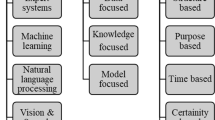Abstract
The current paper intends to use the typical problems of parameter selection and optimization in machining processes to bring out the design ideas that form the foundation of n-tier management information systems (MIS). These ideas can be used for creating data-driven, scalable enterprise information systems. The current phase (phase I) of the implementation highlights the capabilities of these design ideas in improving three key functional parameters of MIS, i.e. multi-dimensionality, isolation and scalability. The problem area of machining process characteristics of non traditional machining has been chosen with two specific goals in mind: A typical machining process has multiple parameters and various corresponding relationships can be found among such parameters. This will be used to highlight the degree of multi-dimensionality that can be achieved from a simple design pattern. The phase II of this paper can actually shift focus from the design of a generic management information system to a specific problem area of machining. This incorporates the features of an expert system in providing the customer or end user with maximum encapsulation of technical data and much improved decision-making capabilities within the system. Some complex machining processes such as abrasive water jet machining (AWJM), wire electrical discharge machining (WEDM) and electro discharge machining (EDM) are characterized by a large number of parameters which are not available in a structured fashion, thus, all the data associated with AWJM, WEDM and EDM systems has been conglomerated and presented in a normalized fashion. The essential features of the current research include the extraction of the relevant data from a large pool of data, with a distinct architecture of MIS, having three scalable layers. The normalization of the available data has been dealt with management information system and presented in the form of a software named “machining expert”. The code for the software provided is easy to understand, being written in Visual Basic and Access server for implementation. The developed “machining expert” for handling non traditional machining (NTM) data can also be extended with suitable design extensions to handle business logic by interacting with the end user. The current paper is applicable to any research on the structure and design of MIS in manufacturing technology.
Similar content being viewed by others
References
McLeod R, Schell G (2003) Management information systems. Prentice Hall PTR, Paramus, USA
Gamma E et al (2000) Design patterns: elements of reusable object-oriented software, software development magazine. Addison-Wesley, Boston
Zeng J, Kim TJ (1992) Development of an abrasive water jet kerf cutting model for brittle material. 11th Int Conf on Jet Cutting Technology. BHRA, Bedford, UK pp483–501
Zeng J, Kim TJ (1996) An erosion model of polycrystalline ceramic in abrasive water jet cutting. Wear 193(2):275–282
Hamatani G, Ramulu R (1990) Machinability of high temperature composites of abrasive water jet. J Eng Mater Technol 112:381–386
Momber AW, Kovačévic R (1998) Principles of abrasive waterjet machining. Springer, Berlin Heidelberg NewYork
Vanderplaats GN (1984) Numerical optimization techniques for engineering design: with application. McGraw-Hill, NewYork
Kishi M, Suzuki S, Araya S (1989) Optimization of multi-stage planetary machining parameters in NC diesinking EDM. Proc 9th International Symposium For Electro-Machining, (ISEM-9), Nagoya, Japan pp 34–37
Scott D, Boyina S, Rajurkar KP (1991) Analysis and optimization of parameter combination in wire electrical discharge machining. Int J Prod Res 29(11):2189–2207
Tarng YS, Ma SC, Chung LK (1995) Determination of optimal cutting parameters in wire electrical discharge machining. Int J Mach Tools Manuf 35(12):1693–1701
Matsuda J, Tomishige S, Tanaka K, Yano H (1989) Evaluation of performance of WEDM by parameter design. Proc 9th International Symposium For Electro-Machining, (ISEM-9), Nagoya, Japan pp 68–71
Singh PJ (1995) Development of a window-based expert system for abrasive water jet cutting. In: Labus TJ (ed) Proc 8th Amer, Water jet Conf, Vol 2, Water jet Techn. Ass, St.Louis, pp 717–726
Jain VK (2003) Advanced machining processes. Allied, India
Hashish M (1989) A model for abrasive water jet machining. Trans ASME J Eng Ind 111
Krvaets AT (1992) Planning of the wire-EDM process. In: Proceedings of the 10th International Symposium for Electro-Machining, (ISEM-10). Magdeburg, Germany, pp218–222
Zeng J, Kim TJ (1991) Material removal of polycrystalline ceramics by high pressure abrasive waterjet - a SEM study. Int J Water Jet Techno l2:1459–1469
Zeng J, Kim TJ (1990) A study of brittle erosion mechanism applied to abrasive water jet process, 10th Int. Conf on Jet Cuttting Technology, Amsterdam. BHRA, Bedford, UK
Author information
Authors and Affiliations
Corresponding author
Rights and permissions
About this article
Cite this article
Chakrabarti, S., Mitra, S. & Bhattacharyya, B. Development of an management information system as knowledge base model for machining process characterisation. Int J Adv Manuf Technol 34, 1088–1097 (2007). https://doi.org/10.1007/s00170-006-0673-5
Received:
Accepted:
Published:
Issue Date:
DOI: https://doi.org/10.1007/s00170-006-0673-5




